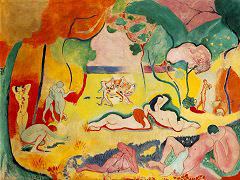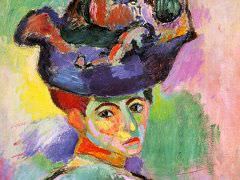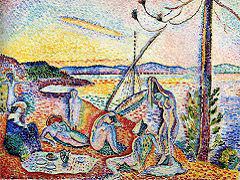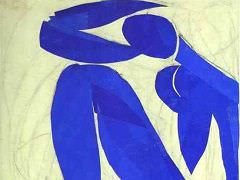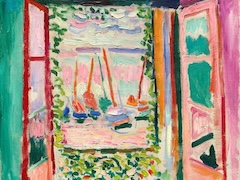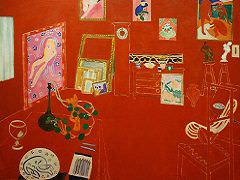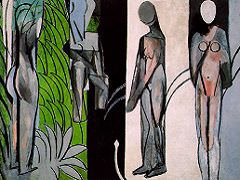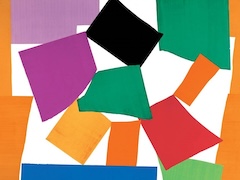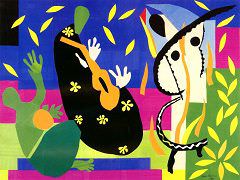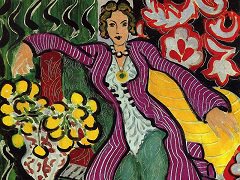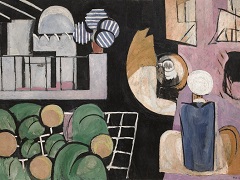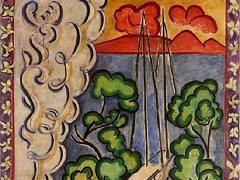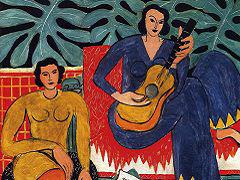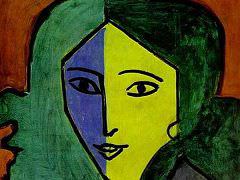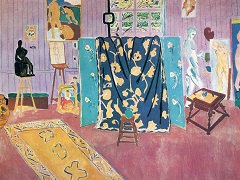Music, 1910 by Henri Matisse

This last time that Matisse turned his attention to a composition of male figures (their genitalia were subsequently painted out, probably at the insistence of the client) he reduced them to a series of hieroglyphs, but, significantly, musical ones. One of his most challenging inventions, it remains explicable only in terms of the Dancers that preceded and the Bathers that were to follow (but which were not realized until six years later, and in another mode). And yet in the stasis of this present sequence of music makers he has produced a disposition unique even in his own work - the only possible release from the preceding round of dancers. There is no consistent precedent for identifying dance with the female and music with the male; indeed, as the pictures presently stand, the sexual differentiation may be virtually meaningless
Originally, to judge from two photographs made while the picture was in progress, the composition was less rigid. In fact, the compositional changes may still be detected today beneath the final painting. A far cry from the muscular, faceted studio models of ten years before, yet coloristically related, these five figures attest once again to Matisse's insistent simplification of a given problem as he worked at it over the years.
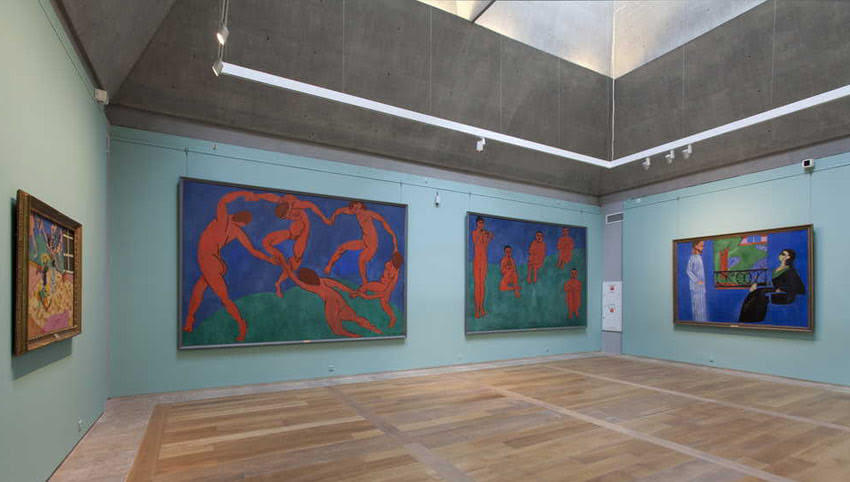
Thematically, Music is connected with a slightly earlier, more provocative work of the same title of about 1907, where the violinist at the left presides over a scene in which two embracing women dance while a male figure serves as repoussoir in the right foreground. Hardly a study for the present picture, it nonetheless links the themes of Music and Dance at a slightly earlier stage in the artist's career. The pipe player, second from left in the 1910 Music, evokes a recumbent figure from Joy of Life, but for the rest this is a unique effort. The evolutionary changes which affect chiefly the three figures to the right lead to a bold frontality. In the completed picture they become, as it were, notes on a staff of music (as does the pipe player), with the increasingly rigid violinist doing service as a kind of treble clef.

